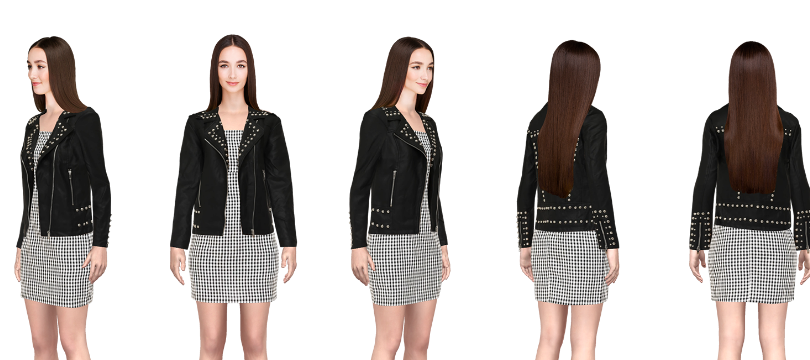Exclusive: Princess Polly launches virtual fitting room tech in Australian-first

Princess Polly has quietly launched a new ‘Try On’ feature, becoming the first Australian retailer to offer customers virtual fitting room technology from UK-based tech company, Metail.
The feature allows customers to create a custom online avatar – or MeModel – by entering their height, weight and bra size, and adjusting their waist and hip measurements, skin tone and hair type.
Customers can then dress their avatar in different garments from the Princess Polly range to see how they fit. The MeModels are reportedly between 92-96 per cent accurate.
According to Wez Bryett, co-CEO of Princess Polly, customer behaviour has already started to change since the pureplay fashion retailer launched the feature two weeks ago.
Revenue per visit is up 31 per cent and customers that engage with the technology are spending 3.5 times longer on the site, Bryett said.
“It gives our customers a more accurate picture of what they’re buying and confidence that they’re choosing the right size. Off the back of that, hopefully it will also reduce returns,” he told Internet Retailing in an exclusive interview.
Preventable returns cost the retail sector US$642.6 billion globally every year, according to a study by global research and advisory firm IHL.
And while it’s hard to pinpoint exactly how many online purchases are ultimately returned (one analyst suggests 17-25 per cent is normal, but executives from Zappos and Asos have pegged it closer to 30 per cent), the rate is easily double that of in-store purchases.
The challenge of predicting how clothes purchased online will fit in real life is one of the main reasons given for returns. And tech companies like Metail and Virtusize have been tackling the space for years.
But surprisingly, Princess Polly customers have been most excited to use the avatars as a styling tool, according to Bryett.
“They’re putting different pairs of pants and tops and jackets on their avatars to see how the outfits look together. You couldn’t do that before online.”
30,000 avatars have been created so far
Despite the fact that the Queensland-based retailer has done almost no marketing for the feature, about 30,000 customers have created avatars on the site so far.
Bryett credits Princess Polly’s 16-24 year-old female customers with the rapid uptake.
“Our customers are very tech-savvy, so they just picked it up naturally. The technology is also very straightforward and easy to use,” he said.
Still, these early adopters only make up about 10 per cent of the retailer’s total customer database.
Bryett believes the majority of customers will start using the technology once more items in the Princess Polly range support the ‘Try On’ feature.
Customers today can dress their avatar in about 200 items of clothing, a tiny fraction of the fast-fashion company’s overall inventory. To put it in context, Princess Polly drops 100 new styles every week.
“The plan is to start small and build it up as we go,” Bryett explained.
In order for garments to be superimposed on an avatar, they have to be photographed in 3D, a completely different process from the way Princess Polly’s other products are photographed.
At the moment, the retailer is sending each garment to Metail in the UK to be photographed. But Bryett said this step will soon move in-house.
The entire range should be available for virtual ‘Try On’ within three months, he said.
This isn’t the first ‘Oz-first’ for Princess Polly
This pace is par for the course at Princess Polly, which has been picking up steam since it evolved from a bricks-and-mortar business to a pureplay company in 2010.
Bryett said the business doubled its revenue in the last 12 months and is on track to do the same in the year ahead.
“It’s just a part of our DNA to be agile and move quickly. If you’re always waiting for things to be proven, you aren’t doing them first,” he said.
Bryett pointed to Princess Polly’s adoption of Afterpay as one example.
“We were the first retailer to try Afterpay. It was essentially an experiment, but we wanted to see if it would be valuable to our customers. And it was,” he said.
While Afterpay has since become hugely popular with customers and retailers alike, Bryett doesn’t see virtual fitting room technology taking hold quite as quickly.
“It’s not as easy [to implement] as just plugging in a new payment method, but I’ve no doubt that virtual sizing and styling tools will get very big within the coming years,” he said.
“Whether it’s this technology [Metail] or another technology remains to be seen, but there’s no doubt that this is where online shopping is heading.”
Like other software-as-a-service companies, Metail charges an initial integration fee as well as a monthly, results-based fee for its technology.
Comment Manually
You must be logged in to post a comment.

No comments